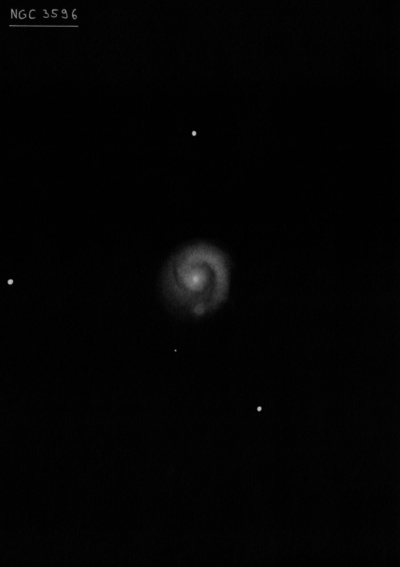
William Herschel discovered NGC 3596 = H II-102 = h841 on 8 Apr 1784 (sweep 187) and recorded "Faintish, pS, R, rather bM, resolvable." His position is 2'-3' north-northwest of UGC 6277. John Herschel made two observations of this galaxy and noted on 23 Apr 1832 (sweep 419). "pF; vL; gbM; 2' dia."
R.J. Mitchell, observing with LdR's 72" on 22 Mar 1857, wrote that he "strongly suspect either a vF nebulous ring round nucleus, or a branch joining centre at the following side. Difficult object." Suprisingly, E.E. Barnard announced in 1906 (AN 172, 123) the discovery of a new large planetary found on a photographic plate and observed visually with the Yerkes 40" refractor. But his position and description (about 2.5' in diameter) applies to this galaxy!
300/350mm - 13.1" (4/10/86): moderately bright, fairly large, diffuse, slightly elongated NW-SE, sharp stellar nucleus is possibly offset to the west of the geometric center.
600/800mm - 24" (5/27/17): bright, large, broad fairly weak concentration in halo to a slightly brighter core, small brighter nucleus. The galaxy is bracketed by a mag 13.5 star 3.7' SSW and a similar star 3.4' N. A third 13th mag star is 4.7' due E forming a near equilateral triangle with sides 7'.
Notes by Steve Gottlieb